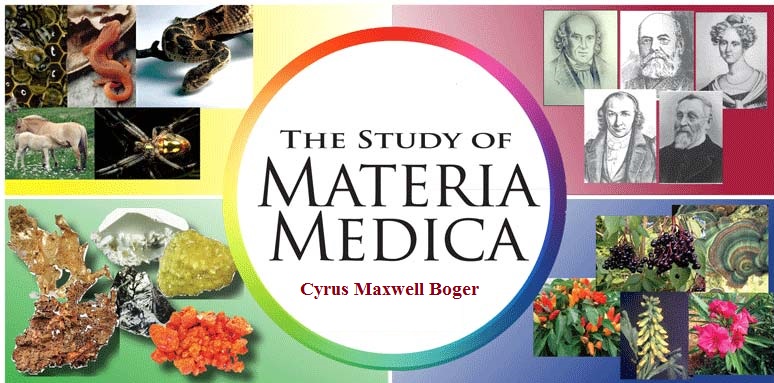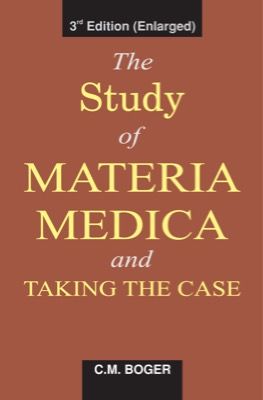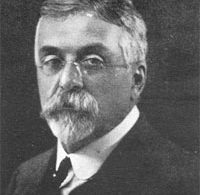
The true physician is the man who knows how to make the best cures and the most expert healer is the man who knows best how to handle his materia medica.
- C M Boger

Dr C M Boger during his long career had contributed important scientific essays, articles and textbooks. His contributions made him universally recognized as author and physician of great stature. This small booklet titled as ‘The Study of Materia Medica and Taking the Case’ is a compilation of four essays by a teacher having immense knowledge accumulated from deep study and comprehension of philosophy and materia medica. This booklet is resultant of the need to have an authoritative treatise on the study of homoeopathic materia medica and case taking from the Hahnemannian standpoint. The booklet is useful to the readers as it contains valuable information that is interesting and instructive. The current edition is the 3rd enlarged edition that covers 4 important essays written by Boger as mentioned in Table 1.
Table 1: Booklet editions with year of publication and index
| Edition | Year | Index |
| First | 1941 | The study of Materia Medica Taking the Case |
| Second | 1952 | Observations on Prescribing |
| Third | 1961 | Grading of Symptoms |
1) The study of materia medica:
In this essay, Boger has addressed key issues that are essential for undertaking the study of homoeopathic materia medica. Hahnemann showed rare acumen in setting down each expression in a personal way, thus securing scientific as well as physical accuracy in observing each individual symptom.
The faculty of mastering materia medica is not dependent upon encyclopedia memory but rather upon the inquisitor’s ability to pick out the characteristics and distinguishing it from the nearest similar. Therefore, it is very useful to have an idea of the relative values of related remedies, i.e. value of symptoms while on other hand learning how to examine a patient and then to find a remedy is of the utmost importance. He cautions about the common way of eliciting well know key notes and prescribing accordingly is a most pernicious practice. The patient’s relative sensitiveness is a very helpful in separating remedies. The various cravings and aversions are highly significant. The past history and the way each sickness had developed helps in understanding the symptom development in a distinctive way through the most diverse affections. The investigation of past history involves a recital of every past sickness, the trend of each sickness and its peculiarities help us to understand the miasmatic background. Few shortcomings of the psoric theory of Hahnemann is described. The next important thing is modalities. Then the facial expressions may be its true index and deserves our most careful scrutiny. All efforts should be taken to learn the nature of the mental change which depicts the whole patient as a person.
Boger has discussed about how physicians are confronted everyday with conditions which lie on the borderline between surgical interference and the remedial powers of medicine. The simillimum often surprises us by its power; what we have been taught to look upon as incurable, is cured. At last, Boger gives advise to all physician that they should persistently cultivate the habit of keen observation, correct reasoning, direct inquiry of nature and absolute honesty with themselves, and all will be well.
2) Taking the case: This essay is discussed under introduction, location, the origin, taking the case, the modality, the mind, the concomitants, the peculiarities, the time, and conclusion. Under each heading, Boger gives a brief idea as pointers for homoeopathic prescribing.
Boger emphasises upon the success of physician being largely dependent upon his power of observing and proficiency in details. To develop the skill of observation and to bring proficiency one needs to study the exhaustive study of physical diagnosis and the many sided relationships to the symptomatology. Boger cautions that one should not only concentrate on the diagnosis along with its comprehension of its picture which will most certainly limit our grasp of the remedies from which a choice may be made. Boger states that different remedies affect different parts, tissues and functions of the organism. The study of regions implies discovery of the seat of the disease and of the remedies related thereto. The importance of considering location as a part of totality or for the selection of simillimum is reflected in Boger’s other literary work including The Synoptic Key of Materia Medica.
In old school, etiology is given too much of importance and on the contrary in homoeopathy the information gathered is wide and may include any influence whatsoever. Cause of disease is extrinsic which is in a general way more accessible and therefore more accurately defined. The second cause is autogenetic that often had mental states as their starting point. Emotional states. Irrespective of the cause the selection of the simillimum should be done with great safety. Closely related to the cause are the circumstances under which disease and the conditions which modify it makes its appearance. Modalities individualize and define every sickness as well as every drug, hence there is a need to select the most suitable medicine. Conditions which modify or excite mental symptoms are of utmost importance.
A study of mental symptoms should include the gross objective changes noted by the attendants as well as a close scrutiny and interpretation by the physician. The mind mirrors itself with great accuracy in the different modes and manners of physical expression.
Boger in this essay gave importance to concomitants because as a group the concomitants contain many anomalous and peculiar symptoms. It should be noted that the modalities, mental accompaniments and duration of an unusual symptom govern its position. Sometimes the affected organ seems overwhelmed by the impact of the disease and the vital powers can find expression through the concomitants only. Then the symptom becomes important and a sole guide for the selection of the remedy.
The physician should identify the peculiarities in the case as every sickness whether natural or induced is the combination of events in location, origin, modality, mental condition, concomitants, peculiarities, and time. Objective phenomenon allows the largest scope to the acumen of the examiner. While observing, the physician should not escape anything. Subjective symptoms have an indefinite character or are common to many disorders therefore they deserve less attention. If an ordinary symptom appears in an extraordinary place or way that it becomes of much value. Sensations are expressed according to the mentality of the subject and it varies. Symptoms which return at stated times become important in proportion as the sickness of which they form a part. Many plants are known to show certain manifestations at particular hours of the day. According to the doctrine of signature, they have a meaning for us if we are only wise enough to see and use them. In conclusion Boger centers his attention that we deal with vital force in health, disease and cure.
c) Observations on prescribing
Under this essay, Boger has emphasized that the better we know our original materia medica the less we will feel the need of newer drugs. Therefore, the students should not only be taught and trained in correct curative methods but afterwards enabled to acquire the working tools needed to put into practice what they have learned. Boger brings it to our notice the sum of Hahnemann’s incredible labour is before us and we should not fail to avail ourselves of this great store house of homoeopathic knowledge that we may actually cure and not trifle with disease.
He is not in favour of clinical experiment and empiricism. We should also reason from above downwards, from within outwards and in the reverse direction of the coming of the symptoms. In this essay Boger explained clinical indications of Senecio aurens, Urtica urens, Alumina, Solidago virgaurea, Pulsatilla nigricans and Pyrogenum.
4) Grading of symptoms:
Illness may present any possible combination from many thousands of symptoms although as a matter of fact such extreme variability of disease expression is the exception. Most of its symptoms are referred to particular diseases, organs and individuals. Therefore, we need use a form of analysis which assembles the most salient and useful points into rubrics which are then arranged in a flexible and easily grasped schema. There is a variation in the case presentation, i.e. having few to many symptoms. The final analysis of every case therefore resolves itself into the assembling of the individualistic symptoms into one group and collecting the disease manifestations into another then finding the remedy which runs through the totality. Grading of symptoms largely depends upon their discovery and the extent of the subsequent confirmation obtained from every one of them, their sphere of action is also of vast importance. In the abstract, the same symptom may have the highest standing in one case and the lowest in the next, all depending upon the general outline of the case, as delimited by the associated symptoms.
To summarise, this booklet is a worth possession for enthusiastic and serious readers of homoeopathy to learn systematic study of case taking, case analysis and homoeopathic materia medica. After reading this booklet one can comprehend the work of Boger as significant and valuable tool for the students, teachers, researchers & the practitioners in their service to humanity through homoeopathy. A special thanks to B. Jain Publishers Pvt. Ltd. for giving us access to such kind of literary treasure.
| ISBN: 978-81-319-0301-8 Pages: 32 Publishers: B. Jain Publishers Pvt. Ltd | |
About Author: Dr Yogesh D Niturkar





